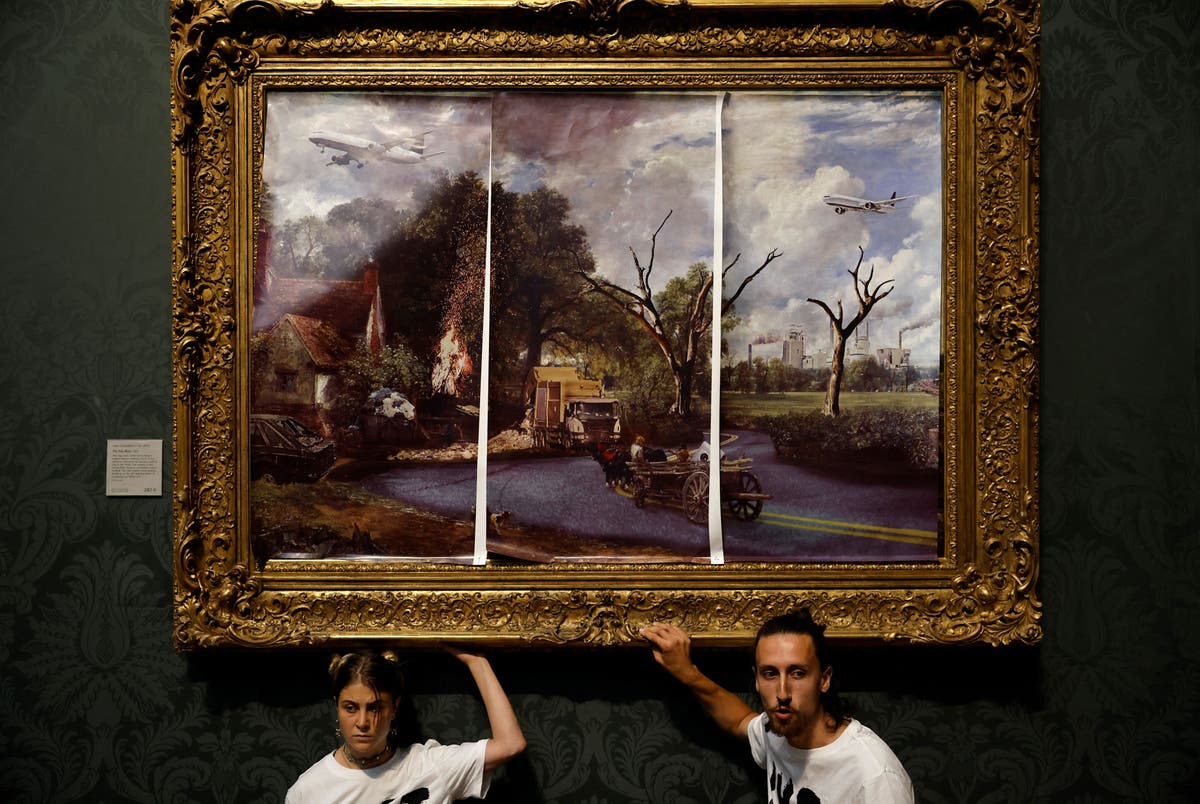Driving through the English countryside, a scene of pastoral beauty unfolds â rolling hills, a tractor chugging along, a sense of peace. But this idyllic image is challenged by the realities of modern life: struggling farmers facing dwindling profits, rising housing costs, and anxieties about the future.
This seemingly simple dichotomy reflects a broader debate in the art world, particularly at the National Gallery. The institution, in its effort to be more "honest," seeks to reframe classic works like Constable's "The Hay Wain" by emphasizing the hardships and societal injustices present during the artist's time.
The National Gallery's curator, Dr. Mary McMahon, argues that the painting's portrayal of rural Suffolk is a "contested landscape," ignoring the realities of the Corn Laws, the aftermath of the Napoleonic Wars, and land enclosures. McMahon suggests that "everything that has not been included in this painting" should be addressed.
This approach, while well-intentioned, risks diminishing the artistic value of the work. It implies that appreciation of a piece should be based solely on its historical context, rather than its inherent beauty and artistic merit.
The curator's desire for "honesty" goes beyond simply acknowledging the historical context. It seeks to impose a specific interpretation, suggesting that viewers should focus solely on the hardships present, rather than appreciating the artist's skill and vision. This, some argue, amounts to an attempt to rewrite history, imposing modern-day sensibilities onto past works.
This trend extends beyond "The Hay Wain." The Tate Britain recently began labeling works linked to the British Empire with explanations of racism, colonialism, and the slave trade. This approach, while important for educating viewers about history, raises concerns about censorship and the risk of reducing art to a mere platform for historical commentary.
The argument against this trend is not about ignoring historical injustices or dismissing the importance of context. It's about acknowledging that art is more than a reflection of its time. It holds intrinsic value as a form of human expression, capable of transcending historical boundaries and evoking emotions in viewers across generations.
This "art of misery" approach, with its emphasis on negative interpretations, runs the risk of creating a sterile and joyless art experience. It also undermines the individual viewer's ability to interpret and connect with works on a personal level.
The debate over how to present and interpret art will undoubtedly continue. But it's crucial to remember that the joy and beauty found in art have a place alongside its historical context. Art should be a space for both contemplation and connection, not a platform for solely emphasizing the darkest aspects of human history.
Article
Entertainment

Art of Misery: When Joy Becomes an Offense

